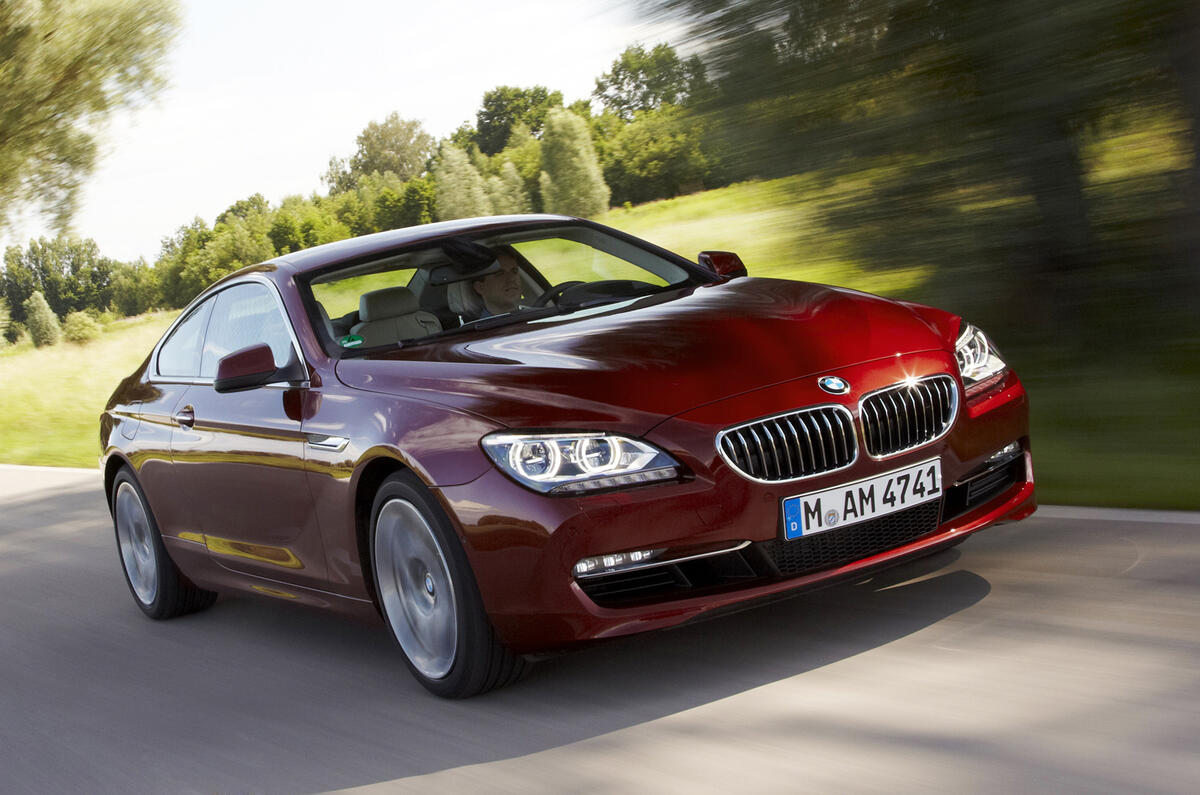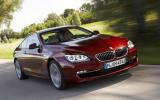What is it?
For a change, the coupe has arrived after the cabriolet. Not that many would have noticed the variation in the traditional launch schedule. Still, the move says a lot about BMW’s priorities with the elegant new 6-series, which by its own admission is still targeted primarily at the North American market. Larger and more comprehensively equipped than its predecessor, the new 6-series coupe exudes class from the very first moment – and not only in terms of styling and interior appointments, both of which are much better resolved than on the car it replaces.
What’s it like?
Sitting on the same platform as the latest 5-series, it is also terrifically rounded from a dynamic standpoint. Even after a short spell behind the wheel, you’re well aware the new two-door’s on-road ability is a improvement on the old 6-series coupe and a clear match for rivals such as the Mercedes-Benz E-class coupe and Jaguar XK.
The new 6-series coupe comes with the choice of three engines, mirroring the strategy taken with 6-series cabriolet launched earlier this year. Among the turbocharged direct injection petrol units is a 315bhp 3.0-litre in-line six in the 640i driven here as well as a more powerful 4.4-litre V8 developing 401bhp in the initial range topping 650i. Also available is a turbocharged common rail injected 3.0-litre in-line six-cylinder diesel with 308bhp in the 640d.
Despite plans for the introduction of a four-wheel drive 650i Xdrive model in certain markets, all versions of the new BMW coupe destined for the UK will retain rear-wheel drive. Unlike the old model which came with the choice of both a six-speed manual and six-speed automatic, though, the new 6-series gets an eight speed automatic gearbox with remote shifting capability across the range as standard.
In keeping with developments in other recent new BMW models, it also receives automatic stop/start, brake energy regeneration, flaps behind the grille that close to improve the drag co-efficient on part throttle loads and on demand ancillary functions – all of which is claimed to lead to combined cycle fuel savings of up to 12 per cent on standard 17-inch wheels and 225/55 R17 tyres.
Although it is lumbered with 1660kg (or 130kg more than old 630i owing to its increased dimensions), the base engine endows the 640i with impressive straight-line performance. With 332lb ft of torque on tap at just 1300rpm, bursts off the line with enthusiasm and provides determined acceleration well into three figures. The delivery is terrifically linear; the twin scroll turbocharger spools up without any discernable lag from idle onwards, providing V8 like levels of shove all the way to the 7200rpm cut-out.
BMW claims 0-62mph in 5.4sec – a full second inside the time quoted for the 630i, with top speed limited to 155mph. There are no official in-gear figures just yet, but with an added 96lb ft developed 1450rpm lower in the rev range it always feels more eager than the model it replaces, even if the engine note, a less than appeal mixture of induction and exhaust blare, is nowhere near as entertaining as the old naturally aspirated 3.0-litre in-line six, whose raspy mechanical hum appears set to be resigned to history.
The 640i coupe devours big distances with great aplomb. High speed stability is one of its real strengths, making it a consummate grand tourer. And with combined average fuel consumption of 37.2mpg, it should be good for at least 500 miles between visits to the petrol station forecourt at normal motorway speeds.





















Join the debate
Add your comment
Re: BMW 640i Coupe
And "fails to connect on an emotional level" is just the most ludicrous thing to write. I mean honestly, what sort of psycho is emotionally connected to their car?
Re: BMW 640i Coupe
I see that the convertible weights 1915kg, so the 1660kg he quotes is probably nonsense anyway.
Re: BMW 640i Coupe
How can this consistently strange character suggest that it is burdened with 1660kg? Is that the correct weight? Seems very light to me! What is there out there that is remotely comparable that is lighter?